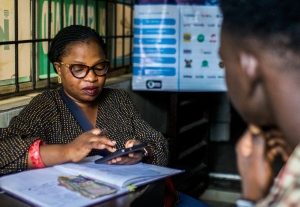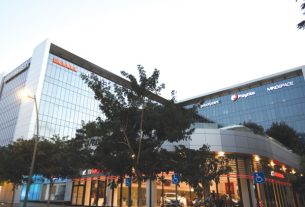Let’s say you’ve currently got a good amount of cash to invest. With the global financial recession building, opportunities are piling up. However, things could get worse in this bear market given we’re only nine months in. How would you invest it?
2022 has so far been a terrible year for both stocks and bonds. Real estate has outperformed stocks by over 20%. But even real estate is starting to fade as mortgage rates surged higher.
How I’d Invest $250,000 Cash Today
After buying I Bonds, I’ve been accumulating a larger-than-normal cash hoard this year. Usually, I’ll have between $50,000 – $100,000 in my main bank account. But so far, I’ve accumulated over $250,000, partially due to a $122,000 private real estate investment windfall earlier this year.
In addition to accumulating cash, I’ve also been dollar-cost averaging in the S&P 500 on the way down. I’ve also been dollar-cost averaging in Sunbelt real estate on the way up. But these purchases are usually only in $1,000 – $5,000 increments.
Now that my cash balance is larger than normal, this is my thought exercise on how to deploy it. If you have less than $250,000, that’s fine too. I share the percentages of where I will allocate my money.
Background Info To Understand Our Investment Process
I’m 45 and my wife is 42. Our kids our 5.5 and 3.
We consider ourselves moderately conservative investors since we haven’t had regular day job income since 2012 for me and 2015 for my wife. We fear having to go back to work, not because of work itself but because we fear losing our freedom with young children. As a result, we are unwilling to take too much investment risk.
Although we don’t have day jobs, we do generate enough passive investment income to cover our living expenses. This is our definition of financial independence.
We also generate online income, which we usually reinvest to generate more passive income. Therefore, our cash pile will continue to build if we don’t spend or invest the money.
For life goals, we both want to remain unemployed at least until our youngest is eligible for kindergarten full-time in 2025. This way, we can spend more time with both children.
After 2025, we might find day jobs or I might focus on becoming a professional writer. I enjoy being an author but it pays poorly.
We’re also looking to upgrade our home in one-to-three years. That said, my wife and children would be happy living in our current home for the next ten years. Buying another home is not a priority.
Our children’s educational expenses are on track after we superfunded two 529 plans. We also have life insurance and estate planning set up. Therefore, there’s no major big ticket items coming up.
Here’s how we’d invest $250,000 cash in today’s bear market. This is what we’re doing with our own cash and not investment advice for you. Please always do your own due diligence before making any investment. Your investment decisions are yours alone.
1) Treasury Bonds (60% Of Cash Holding)
Only about 5% of our net worth is in bonds, individual muni bonds we plan to hold until maturity. Our target annual net worth growth rate is between 5% to 10% a year, depending on economic conditions. As a result, being able to earn up to ~4.8% on a 1-3-year treasury bond is enticing.
At the same time, I’m always on the lookout for a nicer home because I believe living in a great house is the best way to enjoy our wealth. Think about all the time we spend at home nowadays.
There is no joy or utility derived from owning stocks, which is one of the reasons why I prefer investing in real estate over stocks. However, dividend stocks do provide 100% passive income.
Once the 10-year bond yield reached 4%, I decided to purchase the following Treasury bonds totaling $142,872.91.
- $101,736.74,000 worth of 9-month treasury bills yielding 4.2%.
- $10,766.89 worth of 1-year treasury bills yielding 4.3%
- $15,501.33 worth of 3-year treasury bills yielding 4.45%
- $14,867.95 worth of 2-year treasury bills yielding 4.38%

Although locking in a 4.2% to 4.45% return won’t make us rich, it will provide us peace of mind. We also already feel rich, so making more money won’t make us feel richer. Our focus is on optimizing our freedom and time.
Here’s a tutorial on how to buy Treasury bonds, which includes some buying strategies to consider. I will buy more Treasuries if the 10-year reaches 4% again, as you can purchase an unlimited amount, unlike I Bonds.
The one-year Treasury bonds yielding ~4.73% is especially attractive right now. The reason why is because it’s so much higher than the current 10-year Treasury bond yield at ~3.58%. As inflation and interest rates fade over the next 12 months, one-year Treasury bonds and longer durations will look more and more attractive.

The remaining 39.9% of our cash will be invested in risk assets.
2) Stocks (10% Of Cash Holdings)
Roughly 27% of our net worth is in stocks. It was about 30% at the beginning of the year. Thanks bear market!
The range has hovered between 20% – 30% since I left work in 2012. Since I started working in equities in 1999, I’ve done my best to diversify away from stocks and into hard assets.
My career and pay were already leveraged to the stock market. And I saw so many great fortunes made and lost during my time in the industry. When I left work, I continued my preference of investing mostly in real estate.
Unfortunately, we front-loaded our stock purchases in 2022 through our kids’ Roth IRAs, custodial accounts, SEP IRAs, and 529 plans. For over 23 years, we’ve always front-loaded our tax-advantaged accounts at the beginning of the year to get them out of the way.
Most of the time it works out, some of the time it doesn’t. That’s market timing for you. But we do get to front-load our tax-advantaged investments again in 2023, which will prove to be better timing if the S&P 500 stays depressed.
In addition to maxing out our tax-advantaged accounts, we’ve been regular contributors to our taxable online brokerage accounts. After all, in order to retire early, you need a much larger taxable investment portfolio to live off its income.
No Rush To Buy Stocks
If the Fed insists on raising the Fed Funds rate to 5% and ruin the world, then the S&P 500 could easily decline below 3,600. And if earnings start getting cut by 10%, then the S&P 500 could decline to 3,200 based on the median historical P/E multiple.
As a result, I’m only nibbling at these levels. The Fed says it plans to hike through the end of 2022 and reassess. Although, the decline in the Series I Bond rate makes me more bullish.
With investors able to get a guaranteed 4%+ return in Treasuries, it’s hard to see the S&P 500 rebounding strongly until the Fed admits inflation has peaked.
Given the situation, I’m just buying in $1,000 – $5,000 tranches after every 1% – 2% decline through the end of the year. If the S&P 500 goes below 3,600, I will increase my investment size to $3,000 – $5,000 a trade.
If I was in my 20s and 30s, I would allocate 60% of my cash to buying stocks instead. 30% would go to online real estate and the rest to Treasuries and education.
3) Venture Capital / Venture Debt (20% Of Cash Holding)
I enjoy investing in private funds because they are long-term investments with no day-to-day price updates. As a result, these investments cause little stress and are easy to forget about.
I’ve already made capital commitments to a couple venture capital funds from Kleiner Perkins. I also made a capital commitment to Structural Capital, a venture debt fund. As a result, I will just keep contributing to these funds whenever there are capital calls.
I expect venture debt to outperform venture capital (equity) during this time of higher rates. Venture debt is a lower risk way to generate returns in private companies.
The biggest downside to investing in these funds is higher fees. We’re talking 1-3% of assets and 20-30% of profits.
4) Real Estate (10% Of Cash Holding)
Real estate is my favorite asset class to build wealth. It provides shelter, generates income, and is less volatile. Unlike with some stocks, real estate values just don’t decline by massive amounts overnight due to some small earnings miss. Real estate accounts for about 50% of our net worth.
No matter what happens to the value of our current forever home we bought in 2020, I’m thankful it has been able to keep my family safe and loved during the pandemic. When it comes to buying a primary residence, it’s lifestyle first, investment returns a distant second.
All the memories, photos, videos, and milestones our kids have achieved in our current house are priceless. Even when I was suffering from real estate FOMO earlier in the year, our kids said they prefer our much cheaper home. As a real estate obsessed father, that meant a lot.
Their response showed me the price of a home isn’t necessarily the main thing that makes it nicer. The house layout and its familiarity matters a lot too.
Given my wife and kids are happy in our home, I shouldn’t try to buy another one so soon. Ideally, we live in our current home for at least five years (2025), save up a lot more money, and comfortably upgrade based on my net worth home buying rule.
Therefore, I will continue to dollar-cost average into private real estate funds like Fundrise that invest in single-family homes in the Sunbelt. Prices and rents are cooling. However, Sunbelt real estate should be a long-term beneficiary of demographic trends, technology, and work from home.
I will be investing in $1,000 – $3,000 tranches through the end of the year.
5) Debt Pay Down (0% Of Cash Holding)
In a high inflation and rising interest rate environment, I’m not paying down any extra mortgage debt. I already paid down some mortgage debt at the beginning of the year when inflation was high and Treasury bond yields were low.
At the time, it was a suboptimal move since it’s best to keep your negative real interest rate mortgage for as long as possible. High inflation was paying off the mortgage debt for me. But I paid off some mortgage debt anyway because it felt good and I was uncertain about stocks.
In retrospect, paying down some mortgage debt in 2021 was the right move as it saved me from losing ~20% had I invested the cash in the stock market. Hence, if you have debt, consider following my FS DAIR investing and debt pay down framework. This way, you’re always making financial progress.
Today, with inflation still high but Treasury bond yields much higher than mortgage rates, it makes no sense to pay down a negative interest mortgage rate. Instead, it’s better to buy Treasury bonds and live for free, which I’m doing.
If you have revolving credit card debt or auto loan debt, I’d follow my FS DAIR framework and accelerate paying down principal. You want to benefit from rising interest rates not get hurt by it.
Just make sure you don’t compromise your liquidity too much in a bear market. Always have at least six months of living expenses in cash.
6) Education (0.1% of Cash Holding)
Education is the best investment. The paradox of education is it is extremely important to help you achieve financial freedom, yet it is also inexpensive or free today.
For example, for only $20 after tax you can order my bestseller, Buy This, Not That and immediately gain a competitive advantage to building wealth. You’ll also learn how to make more optimal decisions on some of life’s biggest dilemmas.
You could also subscribe to my free weekly newsletter and my free blog posts to stay on top of timely financial topics. The more you immerse yourself in money topics, the more you will learn and take appropriate action to help boost your wealth.
You can also go to YouTube, Khan Academy, or MOOC and watch hundreds of hours of free educational videos. Or you can pay for online courses to get even deeper into a subject.
Ignorance is no longer an excuse given how accessible education is today. Please allocate some of your budget to continuing education. Over time, the combination of experience and education will dramatically improve your confidence, wealth, and peace of mind.
Deployment Speed During Depends On Your Certainty
When the investment return is certain, it’s easier to invest cash. When you’re certain you don’t need the money, it’s easier to invest for longer durations as well. But not all investments are created equal.
I have deployed 60% of my $250,000 in Treasury bonds because I wanted to earn a higher return immediately. In fact, I’m actively trying to figure out a way to optimize our business cash as well. The investment is risk-free, so I have no fear.
I will most certainly fulfill my venture capital and venture debt capital calls when they come due. Otherwise, I will be banned from ever investing with these fund managers again. These investments have risks, but I want to diversify further.
I’m happy to keep investing in Sunbelt real estate funds, like I have since 2016, because I’m confident in the long-term demographic trend of relocating to lower-cost areas of the country. However, I’m also confident real estate prices and rents will fade over the next year, hence why I’m slowly legging in.
Finally, I’m certain I don’t like stock market volatility. I’m also uncertain how far rich central bankers will go to crush the middle class. As a result, I’m just nibbling and will focus on valuations.
It is discomforting to see your cash pile dwindle as you invest during a bear market. However, investing during a bear market tends to work out well over the long run. Further, if you maintain your income streams, your cash pile will replenish every month.
We know the average bear market lasts about 15 months. Hence, there’s a decent chance we could get out of this rut some time in 2023. Taking advantage of higher guaranteed returns while legging into risk assets today sounds like the right thing to do.
Reader Questions And Action Items To Invest Cash
Readers, how would you invest $250,000 cash in today’s bear market? Even if you don’t have $250,000, where would you invest your money? What type of investments do you think will generate over a 4.2% return over the next 12 months?
To gain an unfair competitive advantage in building wealth, read Buy This, Not That. It was written exactly for volatile times like these. I utilize my 27+ years of investing and finance experience to help you make better decisions. Click the image to pick up a copy today.
For more nuanced personal finance content, join 55,000+ others and sign up for the free Financial Samurai newsletter. I recap the week’s main events and share my candid thoughts.




